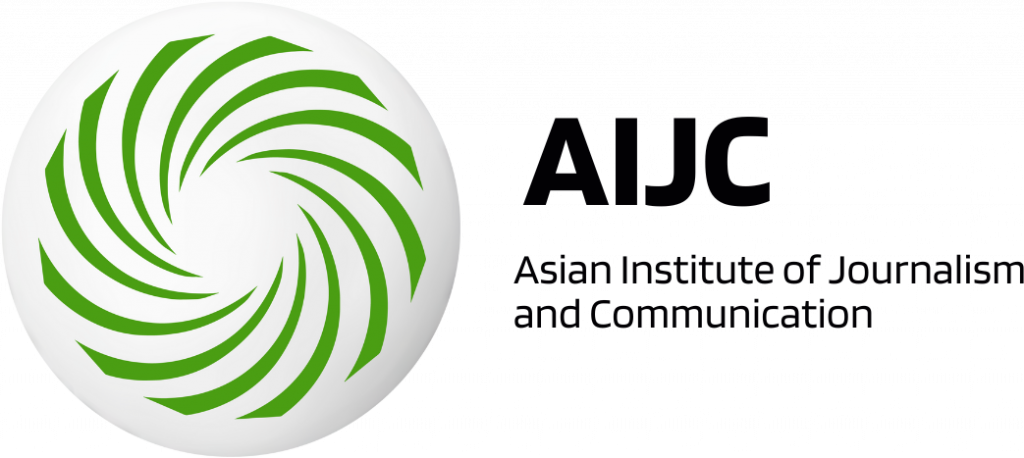Public Official Course
- Specialty Courses
- Fast-Track Courses
- Targeted Spot Courses
- Public Official Courses
Public Course on
Newswriting for Public Offices and Non-Profits
This course is designed to equip communication practitioners with the essential skills needed to create newsworthy reports. It will cover the basic elements of reporting, as well as best practices used by experienced journalists in the Philippines.
Course Schedules: February 11-12, 2026, 9:00 a.m. - 5:00 p.m.
Individual Rate: 13,000 PHP
Online Live via


Course Structure
Day 1: Foundations of Newswriting (8 Hours)
Opening program: Welcome and Course Overview
- Introductions: Participants and Trainer
- Course Objectives and Expectations
- Overview of the Two-Day Agenda
- Brief Icebreaker Activity
Session 1: Understanding News Values
- What is News?
- Definitions and purpose of news
- The role of news in society (informing, educating, watchdog)
- Discussion: What makes something “news”?
- The Elements of Newsworthiness
- Detailed exploration of: Impact/Consequence, Timeliness/Currency, Proximity, Prominence, Conflict, Unusualness/Novelty, Human Interest
- Examples for each news value
Session 2: News Gathering
- The Reporter’s Mindset
- Curiosity, skepticism, persistence, accuracy
- Basic tools: notebook, recording device, critical thinking
- Observation and Fact-Finding
- Developing keen observation skills
- Initial research and background checks
- The importance of verification and cross-referencing information
- Interviewing Techniques
- Preparation: Researching the topic and interviewee
- Types of questions: open-ended, closed-ended, probing, follow-up
- Active listening and effective note-taking
- Handling difficult situations (e.g., reluctant sources, evasive answers)
- Ethical considerations in interviewing (on-the-record, off-the-record, on background)
Session 3: Finding the Right Peg
- Understanding the “Peg”
- Definition: The central idea, angle, or news hook of a story
- Why a strong peg is crucial for focus, clarity, and reader engagement
- Distilling complex information into a compelling core message
- Developing Story Angles (45 min)
- Brainstorming different perspectives on the same event or issue
- Identifying the most significant, impactful, or unique aspect.
- Considering the target audience and their interests
- Techniques for finding fresh angles (e.g., human impact, unexpected consequences, local relevance)
Session 4: News Sources
- Types of Sources
- Primary Sources: Eyewitnesses, official documents, direct interviews, raw data
- Secondary Sources: Reports, analyses, academic papers, news articles (from other outlets)
- Tertiary Sources: Encyclopedias, summaries (use with caution for verification)
- Discussion: Advantages and disadvantages of each type.
- Identifying and Cultivating Reliable Sources
- Official sources (government, police, institutions, spokespersons)
- Expert sources (academics, professionals, researchers).
- Community sources (activists, leaders, residents).
- Developing trust and rapport
- Protecting confidential sources
- Verifying and Corroborating Information
- The importance of multiple sources
- Red flags for unreliable information
- Basic fact-checking principles
Day 2: Crafting the News Story & Critiquing (8 Hours)
Opening Program: Day 1 Recap and Q&A
- Brief review of key concepts from Day 1
- Open forum for questions
Session 5: Types of News
- Hard News vs. Soft News
- Hard News: Definition, characteristics (timely, factual, significant), examples (crime, politics, disasters)
- Soft News (Feature News): Definition, characteristics (less time-sensitive, human-interest driven, narrative), examples (profiles, trend pieces, historical features)
- Discussion: When to use each type
- Common News Story Formats
- Spot News: Reporting on events as they happen
- Follow-up Stories: Continuing coverage of a developing event
- Updates/Briefs: Concise summaries of minor news items
- News Releases/Press Releases: Understanding their purpose and how to extract news from them
- Beyond Text: The Role of Visuals
- How photos, videos, and infographics enhance news stories
- Basic considerations for visual storytelling
Session 6: News Writing
- The Inverted Pyramid Structure
- Concept: Most important information first, followed by supporting details in descending order of importance
- Rationale: Reader attention, ease of editing, immediate information delivery
- Visual representation and breakdown
- The Lead
- The 5 W’s and 1 H: Who, What, When, Where, Why, How – and their hierarchy in the lede
- Crafting compelling and concise leads (single sentence, maximum two)
- Types of leads: Summary, Quote (use with caution), Question (generally avoid for hard news)
- Common lead writing mistakes to avoid (e.g., burying the lede, too long, too vague)
- Body Paragraphs and Attribution
- Elaborating on the 5 W’s and 1 H
- Providing context, background, and supporting details
- Effective integration of quotes and proper attribution
- Using transitions for flow and coherence
- The Tail (Ending)
- Less crucial information, future developments, contact details, or a final relevant quote
- Principles of News Writing Style
- Clarity, conciseness, accuracy, objectivity
- Active voice, strong verbs, precise language
- Avoiding jargon, clichés, and opinion
Session 7: Workshop and Critiquing Session
- Part 1: News Story Writing Workshop
- Scenario Introduction: Trainer provides a detailed scenario with raw facts, quotes, and background information (e.g., a local event, a community issue, a minor incident)
- Individual Writing Time: Participants are given a set time to write a news story based on the provided scenario, applying all the principles learned (news values, peg, inverted pyramid, lead writing, source attribution)
- Trainer provides guidance and answers individual questions during this time
- Part 2: Critiquing Session
- Peer Review: Participants exchange their written news stories (anonymously or in small groups, as preferred)
- Guided Critique: Using a provided checklist (e.g., clarity of lede, presence of 5 W’s, inverted pyramid structure, accuracy, grammar, flow, strong peg, headline effectiveness), participants provide constructive feedback to their peers
- Group Discussion and Trainer Feedback: Selected stories (or excerpts) are discussed as a whole group, with the trainer providing expert critique, highlighting strengths, and suggesting areas for improvement
- Emphasis on learning from examples
Closing program: Course Wrap-up, Q&A, and Certificates
- Key takeaways from the course
- Final Q&A session
- Distribution of certificates of completion
- Course evaluation
DURATION
2-Day Study
TIME COMMITMENT
8 Hours/Day
FORMAT
Live Online Classes
DELIVERABLES
1 Output
DIFFICULTY
Intermediate
COURSE LANGUAGE
English
CERTIFICATION
Digital Certificate
PLATFORMS
MS Office/Google Suite, Zoom Professional, Viber
What You’ll Learn
- Identify and apply key news values to assess the newsworthiness of events.
- Employ effective strategies for gathering accurate and relevant information from various sources.
- Develop a strong “peg” or angle for news stories and craft compelling headlines.
- Differentiate between various types of news stories and their appropriate applications.
- Structure news reports using the inverted pyramid style, including effective leads and body paragraphs.
- Apply ethical considerations in news reporting and source handling.
Course Schedules
- Day 1: February 11, 2026, Wednesday. 9AM to 5PM
- Day 2: February 12, 2026, Thursday. 9AM to 5PM
Corporate Rates Available.
Special Packages and Rates are available for your organization.
Course Instructor

Janess Ann J. Ellao is the Associate Director of the Professional Development Program of the Asian Institute of Journalism and Communication. She teaches investigative journalism and news development techniques at the AIJC Graduate School. She is a researcher and a former journalist.